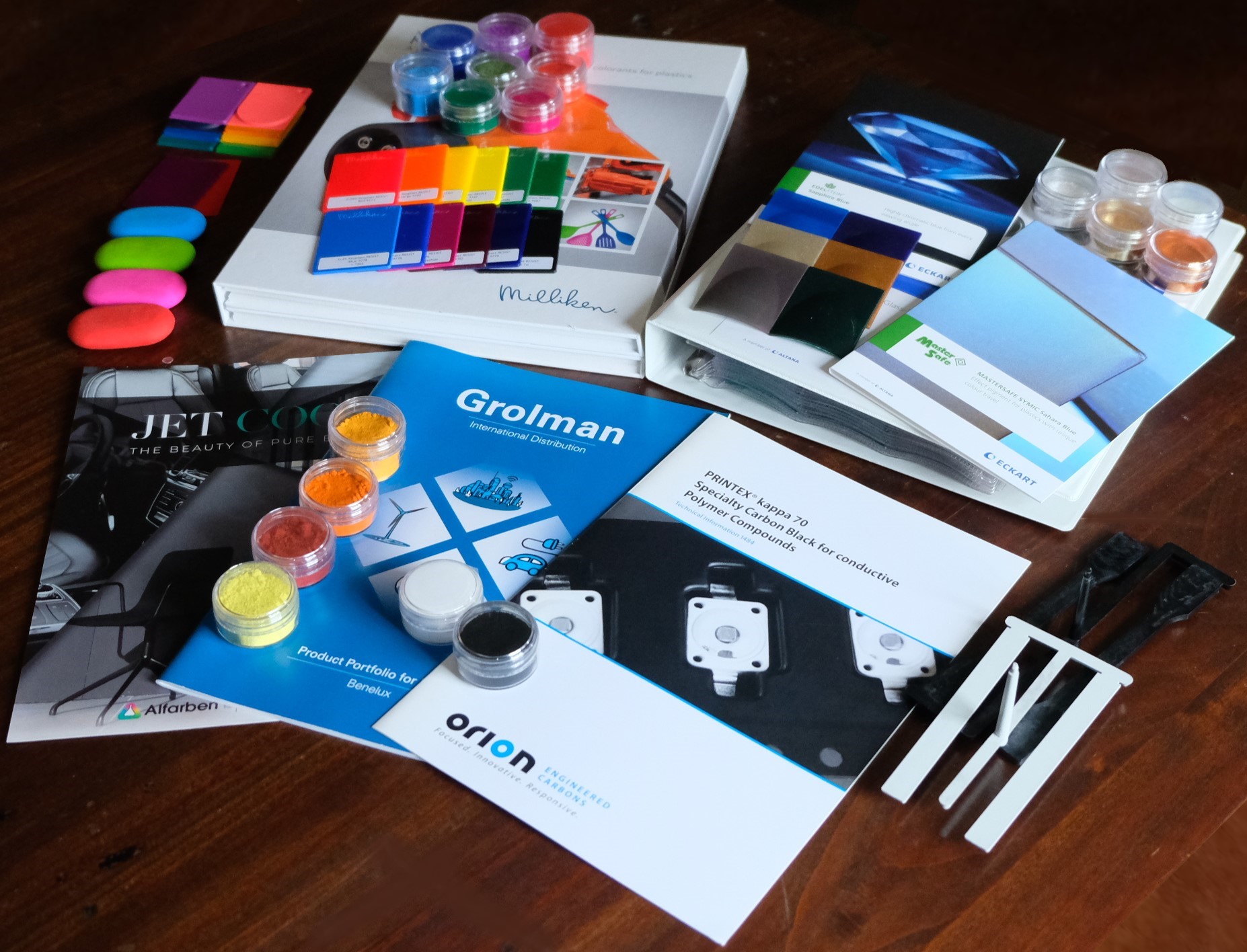Pigments, Dyes and Colour Index.

What do Kronos 2220, Ti-Pure R-105, RCL9 and Tioxide TR60 have in common? 1
What to think of Sicotan Yellow K2001 / FG, Heucodur Yellow 3R and Yellow 699D? 2
How are Macrolex Violet 3R, KeyPlast Violet IRS, LambdaPlast Violet 3R and Violet 92 different? 3
And what about Oracet Orange 230, KeyPlast Orange LFP, Amaplast Orange GXP and Amaplast Orange YXL? 4
Or if you can choose from Macrolex Green 5B, KeyPlast Green B and LambdaPlast Green B? 5
All pigments and dyes, all sorts of nice commercial names, a variety of manufacturers! But what does it mean, which one do you choose, which one is suitable for your plastics, do you already have the pigment or dye in your own portfolio?
As an Colour Expert of Engineering Materials, you are frequently approached by producers and suppliers with pigments and dyes, which can be a nice addition to your own portfolio or a backup/second source. But then it would be so much easier if you can compare them directly based on the chemical and/or technical Colour information.
And you can!
Nearly all pigments and dyes are included in the so-called Colour Index, a reference database, established, in 1925, and maintained by the Society of Dyers and Colourists (SDC) and American Association of Textile Chemists and Colourists (AATCC). In this database, pigments and dyes are classified according to their chemical composition and/or colour.
There are 2 forms of Colour Index: the Colour Index Constitution Number, abbreviated CICN, and the Generic Name of the Colour Index, abbreviated CIGN.
The CICN codes a pigment or dye based on its molecular formula, classifying it very precisely, but it is a purely numerical code; especially if you have many different numbers, you have to look up the exact chemical structure in the database.
Take CICN 77491 for example. Do you immediately know what it is?
For daily practice, the CIGN, the generic coding, is much easier, because it combines the Colour type (pigment, dye, dispersion, etc.), the Colour tone (white, black, blue, green, yellow, brown, orange, red, violet) and a serial number; this classification is the most commonly used worldwide by Colour experts and the manufacturers of pigments and dyes.
CICN 77491, for example, is the CIGN PR101 or Pigment Red 101. Even if you are not a Colour Expert, this already gives some explanation and the experienced Colour Expert will remember and recognise this more easily as red Iron oxide (or Fe2O3 red).
The great thing about the Colour Index is that it not only lists the molecular formula and structure for almost all materials, but also a list of manufacturers and commercial names. And even better is that it has been digitised for some time now and is available online (via a subscription), making it easy to look up all available information.
Then those commercial names are suddenly easy to translate:
1 All four are pigments with Colour Index PW6, or TiO2 whites.
2 All three are pigments with Colour Index PBr24, or (warm) yellow Cr/Sb Titanates.
3 The commercial names reveals it somewhat, because the Colour Index is the dyes respectively
SV36, SV13, SV36 and the pigment PV14. So Macrolex Violet 3R and LambdaPlast Violet 3R are
possibly interchangeable, but KeyPlast Violet IRS is an entirely different dye and Violet 92 is even
an inorganic pigment.
4 Beautiful names, beautiful dyes, but not all interchangeable! Oracet Orange 230 en
KeyPlast Orange LFP may be interchangeable as SO60, but Amaplast Orange GXP, SO106, and
Amaplast Orange YXL, SO111, are really different.
5 All three green dyes have the Colour Index SG3, and are possibly all three interchangeable.
Is the Colour Index all-encompassing and do you have to do nothing else? No!
Because some manufacturers choose not to include new colourants in the Colour Index due to competition and/or not to disclose the chemical structure. And from a Colour point of view, it is always recommended, even if the Colour Index is the same, to analyse pigments and dyes from different suppliers. Due to variation in raw materials and processes from different suppliers, nuance differences can and will appear; Colour Experts know that even the very small nuance differences are key in colour developments and colour productions.
And with the increasing interest and opportunities in the field of sustainability, it would be preferable if the Colour Index also included information on safety, environment, GMP, REACH and FDA related topics.
In this world of commerce, the Colour Index (Online) is an indispensable coding in the varied colour language of pigments and dyes!
Shakespeare already said it : “What's in a name ? That which we call a rose by any other name would smell as sweet.” (Romeo and Juliet 2, 2).
The Colour Expert says: give me the Colour Index!
Feel free to contact us or request a quotation




